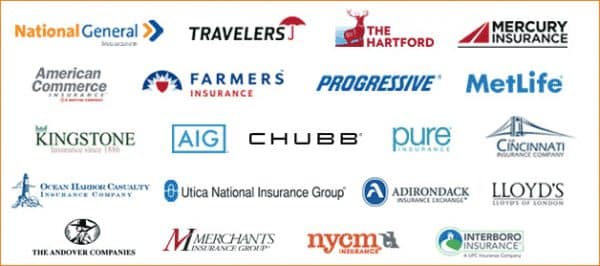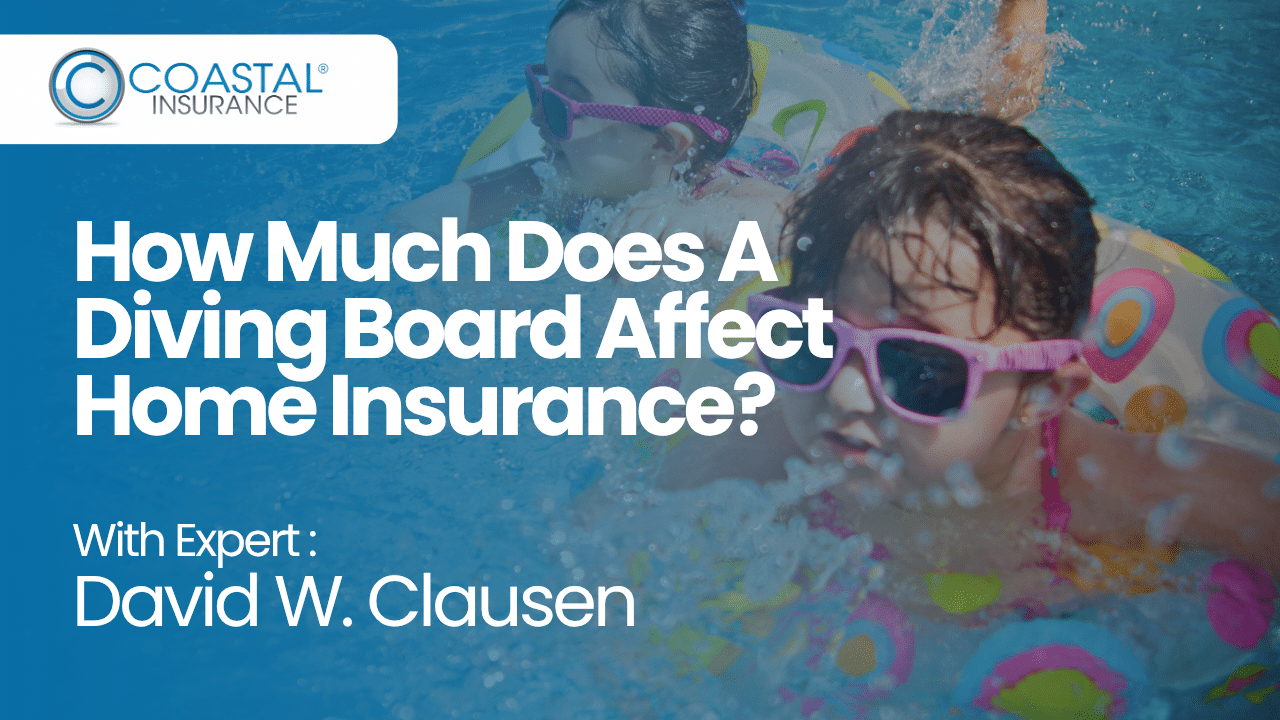Compare Prices & Start Saving Today!
Common Homeowners Insurance Discounts
New Homes may enjoy discounts up to 14%.
Security Systems such as deadbolt locks, simple alarm systems, and smoke detectors may reap discounts from 1-5%. Sophisticated monitoring services and integrated sprinkler systems may reduce your premiums as much as 20%.
Combined Policies: If you combine your automobile and homeowner policy with the same carrier you may obtain discounts from 5% to 15%.
Carrier Longevity: If you maintain your coverage with the same carrier for a number of years they will usually reward you with a discount.
Retired Homeowner: On average stays home longer and may be rewarded with a 5% discount.
Non-smoker: Some carriers reward non-smokers a 5% discount.
Verified Google Reviews
Bedford-Stuyvesant NY Home Insurance
Coastal Insurance Solutions is a leading company for finding customers home insurance in Bedford-Stuyvesant, New York. We work hard to find you great insurance options and direct you to the best choice based on our ability to search the market for great rates as well as our relationships with over 30 companies! We will even send you up to ten proposals for you to review, all completely free of charge! We compare ratings, prices, and our own experience with companies over claims to help you get the best company. Owning a home is a huge deal for families, and our priority is helping you to protect your assets.
Fill out a secure form to see the best price out there, or if you prefer, give us a call and talk to our licensed and informed staff to find out more!
Get 10 FREE QUOTES from Top-Rated Insurance Companies
Homeowners Insurance Basic Coverages
Coverage A: Dwelling
Dwelling coverage covers the cost of rebuilding the house itself using like materials. This coverage also includes any permanent attachments, including central air conditioning equipment, heating and plumbing equipment, and similar attached items.
Coverage B: Other Structures
Fences, pools, gazebos, sheds, and other structures that are not attached to your home are covered by Coverage B, other structures coverage. The value of this coverage is usually set to 10% of the dwelling coverage amount but can be changed to a higher coverage amount if needed.
Coverage C: Personal Property
Personal belongings are described as personal property on your home insurance policy. This coverage would include common household items like televisions, furniture, clothing, and other common belongings. Personal property coverage is usually assigned a value of at least 50% of the dwelling coverage on a homeowners insurance policy, but this coverage amount can often be adjusted.
Many homeowners insurance policies cover personal property on an actual cash value basis. What this means is that if your personal property is lost, damaged, or destroyed in a covered claim, your insurer will pay a depreciated value based on wear and tear due to age. Some insurers provide an option for personal property coverage at replacement cost value, which covers your personal property for the full cost of replacement, typically for a slightly higher premium.
Certain types of items, such as jewelry, firearms, furs, and similar items have limited coverage on a homeowners insurance policy. These items can be added to your policy as an endorsement to insure them to their full value.
Coverage D: Additional Living Expenses
If a covered claim forces you out of your home temporarily while your home is being repaired, additional living expenses are covered by Coverage D. This can include the cost of hotels or of eating out and this coverage is designed to cover the difference between your normal living expenses and the higher temporary expenses you experience due to a claim. Typically, Coverage D is equal to 20% of the coverage amount for Coverage A, dwelling coverage.
Coverage E: Personal Liability
Coverage E, commonly known as personal liability coverage, protects you against lawsuits for bodily injury to others or damage to the property of others due to negligence. Coverage amounts typically start at $100,000, although most policies provide $300,000 of coverage or higher. Personal liability coverage on your home insurance also pays for your legal defense, which can be a sizable expense in itself.
Common risks include dog bites and slip and fall accidents, but accidental damage to the property of others is also covered.
Households with pools or children who have friends who visit your home may wish to consider a higher coverage amount. This coverage is available for all family members in the household.
Coverage F: Medical Payments
Your home insurance policy also provides coverage for small injuries to others that don’t involve a lawsuit. Accidents can happen, but many accidents are minor, only requiring basic medical attention.
Get 10 FREE QUOTES from Top-Rated Insurance Companies
All Risk vs. Named Peril
A homeowners insurance policy can be either an all-risk policy or a named peril policy, with the difference between the two being which risks to your home are covered by the policy. As its name suggests, an all-risk policy is more inclusive, providing coverage for almost all risks to your home except for specifically excluded risks.
A named peril homeowners insurance policy only provides coverage for the home that is specifically named as coverage items on your policy. Named peril policies also have specific exclusions to coverage while also excluding any risks that are not specifically named as covered perils.
Covered personal property perils may differ from those covered for the dwelling, depending on the type of policy. The five types of policies for single-family homes are HO-1, HO-2, HO-3, HO-3 with HO-15, and HO-8.
HO-1 Basic Homeowner
A basic homeowners insurance policy, sometimes called an HO-1 policy, provides coverage for fire and lightning, as well as wind and hail damage — but being a basic insurance policy, omits coverage for several other risks to homes. Due to consumer demand for broader coverage, this type of policy is not commonly available from insurers.
HO-2 Broad Basic Homeowner
An HO-2 homeowners insurance policy expands upon the coverage provided by an HO-1 policy by adding some additional perils to the coverage for the dwelling: falling objects, roof collapse due to the weight of ice or snow, building collapse, water damage due to bursting pipes or sudden leaks, frozen pipes, and damage from electrical surges.
HO-3 Special Extended Homeowner
Currently the most popular type of homeowners insurance policy, an HO-3 policy provides all-risk coverage for your dwelling while providing coverage for 18 named perils for your personal property. All of the coverages provided by an HO-2 policy apply to personal property on an HO-3 policy. Covered perils for the dwelling itself are limited only by named exclusions.
HO-3 with HO-15 Comprehensive
This type of policy does not limit coverage for personal property to named perils, instead of covering both your home and personal belongings for all perils except for those specifically excluded from your policy. Depending on the insurer, a similar type of comprehensive coverage may also be available through an HO-5 policy.
HO-8 Modified Homeowner
Coverage for historic homes is often provided through an HO-8 homeowners insurance policy, which provides limited coverage similar to an HO-1 policy but is designed to cover homes that may cost significantly more to rebuild than their market value.
Homeowner Insurance Tips Video
Get 10 FREE QUOTES from Top-Rated Insurance Companies
About Bedford-Stuyvesant NY
Bedford–Stuyvesant (colloquially known as Bed-Stuy) is a neighborhood of 153,000 inhabitants in the north central portion of the New York City borough of Brooklyn. The neighborhood is part ofBrooklyn Community Board 3, Brooklyn Community Board 8, and Brooklyn Community Board 16. The neighborhood is patrolled by the NYPD’s 79th and 81st precincts. In the City Council, the district is represented by Robert Cornegy of the 36th Council District.
Bedford–Stuyvesant is bordered by Flushing Avenue to the north (bordering Williamsburg), Classon Avenue to the west (bordering Clinton Hill), Broadway to the east (bordering Bushwick), and Atlantic Avenue to the south (bordering Crown Heights and Brownsville). It is served by Postal Service ZIP codes 11205, 11206, 11216, 11221, 11233, and 11238. The main north–south thoroughfare is Nostrand Avenue, but the main shopping street is Fulton Street; the latter lies above the main subway line for the area, on the A C trains. Fulton Street runs east–west the length of the neighborhood and intersects high-traffic streets including Bedford Avenue, Nostrand Avenue, and Stuyvesant Avenue. Bedford–Stuyvesant is actually made up of four neighborhoods: Bedford, Stuyvesant Heights, Ocean Hill, and Weeksville. Part of Clinton Hill used to be considered part of Bedford–Stuyvesant.
For decades, it has been a cultural center for Brooklyn’s African American population. Following the construction of the IND Fulton Street Line in 1936, African Americans left an overcrowded Harlem for greater housing availability in Bedford–Stuyvesant. From Bedford–Stuyvesant, African Americans have since moved into the surrounding areas of Brooklyn, such as East New York, Crown Heights, Brownsville, and Fort Greene. Bedford–Stuyvesant has many historic brownstones. These homes were developed by speculative developers for the expanding middle to upper middle class from the 1890s to the late 1910s. Many of these homes contain highly ornamental detailing throughout the interior of the home and have classical architectural elements, such as brackets, quoins, fluting, finials, elaborate frieze and cornice banding.









![IBA Top Retail Brokers 2024 Medal[88] IBA's Top Retail Broker 2023](https://coastalinsurancesolution.com/wp-content/uploads/2024/07/IBA-Top-Retail-Brokers-2024-Medal88.png)



